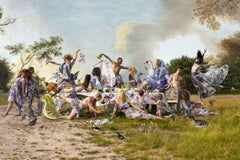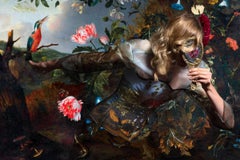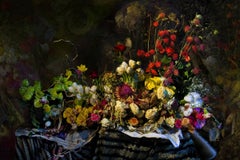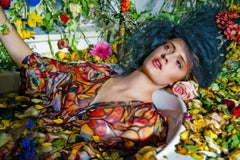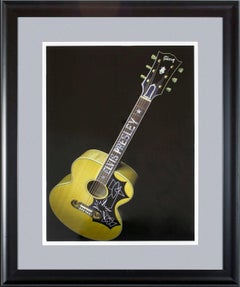Florida - Still-life Photography
to
7
41
57
87
57
210
Overall Width
to
Overall Height
to
68
384
3
2
4
22
19
301
75
15
10
9
6
2
2
1
1
218
202
31
124
110
102
87
84
75
57
49
39
33
29
29
29
28
19
17
16
15
14
14
326
326
123
123
114
128
72
28
15
11
59
136
452
3,644
1,600
Item Ships From: Florida
Fight for family values by Hans Withoos
By Hans Withoos
Located in New York City, NY
Fine art inkjet print on special paper rag
Ask us for framing options
Hans Withoos career spans more than twenty years worldwide. After graduating from the Art Academy. He specializ...
Category
2010s Contemporary Florida - Still-life Photography
Materials
Plexiglass, Color, Archival Pigment, Digital Pigment
Hidden Faces by Hans Withoos
By Hans Withoos
Located in New York City, NY
Fine art inkjet print on special paper rag
Ask us for framing options
Hans Withoos career spans more than twenty years worldwide. After graduating from the Art Academy. He specializ...
Category
2010s Contemporary Florida - Still-life Photography
Materials
Plexiglass, Color, Archival Pigment, Digital Pigment
STILL LIFE IN DRIED FLOWERS, STUFFED ANIMALS AND PAST NEWS by Hans Withoos
By Hans Withoos
Located in New York City, NY
HANS WITHOOS (Rotterdam, The Netherlands)
STILL LIFE IN DRIED FLOWERS, STUFFED ANIMALS AND PAST NEWS
40 x 60 inches - Edition of 9
Fine art inkjet print on special paper rag, on Di...
Category
2010s Contemporary Florida - Still-life Photography
Materials
Archival Pigment
FLOWERBATH PORTRAIT by Hans Withoos
By Hans Withoos
Located in New York City, NY
HANS WITHOOS (Rotterdam, The Netherlands)
FLOWERBATH PORTRAIT, 2018
40 x 60 inches - Edition of 9
Fine art inkjet print on special paper rag, on Dibond
Mounted and Framed
Hans Wi...
Category
2010s Contemporary Florida - Still-life Photography
Materials
Archival Pigment
BOY ON A TABLE by Hans Withoos
By Hans Withoos
Located in New York City, NY
HANS WITHOOS (Rotterdam, The Netherlands)
Boy on a table, 2018
40 x 60 inches - Edition of 9
Fine art inkjet print on special paper rag, on Dibond
Mounted and Framed
Hans Withoos...
Category
2010s Contemporary Florida - Still-life Photography
Materials
Archival Pigment
"Elvis Presley Guitar'" photograph by Lisa S. Johnson from Hard Rock Hotel Vegas
Located in Boca Raton, FL
"Elvis Presley Guitar'" framed color photograph by Lisa S. Preston taken for her book "108 Rock Star Guitars." Image size: 24 x 18 1/4 inches. Thi...
Category
21st Century and Contemporary Contemporary Florida - Still-life Photography
Materials
Photographic Paper
"Hendrix at Woodstock" guitar photo by Lisa S. Johnson from Hard Rock Hotel
Located in Boca Raton, FL
Original photo of "Hendrix at Woodstock" Jimi Hendrix guitar taken by Lisa S. Johnson for her book, "108 Rock Star Guitars." "Hendrix at Woodstock"...
Category
21st Century and Contemporary Contemporary Florida - Still-life Photography
Materials
Photographic Paper
"Rick Savage Def Leppard" guitar photo by Lisa S. Johnson from Hard Rock Hotel
Located in Boca Raton, FL
Original photo of a Rick Savage Def Leppard guitar taken by Lisa S. Johnson for her book, "108 Rock Star Guitars." This framed photo was displayed in one of the guest rooms of the or...
Category
2010s Contemporary Florida - Still-life Photography
Materials
Photographic Paper
"Martin Barre Jethro Tull" photograph by Lisa S. Johnson from Hard Rock Hotel
Located in Boca Raton, FL
Framed photograph of Martin Barre of Jethro Tull's blue PRS guitar taken by Lisa S. Johnson for her book, "108 Rock Star Guitars." Previously displayed in ...
Category
21st Century and Contemporary Contemporary Florida - Still-life Photography
Materials
Photographic Paper
"Rick Savage Def Leppard" guitar photo by Lisa S. Johnson from Hard Rock Hotel
Located in Boca Raton, FL
Original photo of a Rick Savage Def Leppard guitar taken by Lisa S. Johnson for her book, "108 Rock Star Guitars." "Rick Savage Def Lepard" printed on lower left front margin. "Photo...
Category
21st Century and Contemporary Contemporary Florida - Still-life Photography
Materials
Photographic Paper
Tears of Honey
By Hans Withoos
Located in New York City, NY
HANS WITHOOS (Rotterdam, The Netherlands)
Tears of Honey, 2017
40 x 40 inches - Edition of 9
Fine art inkjet print on special paper rag, on Dibond with a certified Liquid Gloss fini...
Category
2010s Contemporary Florida - Still-life Photography
Materials
Archival Pigment
Vanitas with Seneca
By Hans Withoos
Located in New York City, NY
HANS WITHOOS (Rotterdam, The Netherlands)
Vanitas with Seneca, 2016
60 x 40 inches - Edition of 9
Fine art inkjet print on special paper rag, on Dibond with a certified Liquid Gloss...
Category
2010s Contemporary Florida - Still-life Photography
Materials
Archival Pigment
Pyramids with Terracotta Magenta Art Deco Head
By Robert Funk
Located in Miami, FL
The timelessness of pyramids is punctuated with a dreamy terracotta classcial head.
Signed, dated, numbered lower right, recto 4/15, unframed, other sizes available Printed on Hah...
Category
2010s Abstract Geometric Florida - Still-life Photography
Materials
Photographic Paper, Inkjet, Archival Pigment
Forest of Glass with Bronze Nymph
By Robert Funk
Located in Miami, FL
Shipping should be around $100 - Signed, numbered and dated on verso, 2/15 unframed, other sizes available
Category
2010s Abstract Geometric Florida - Still-life Photography
Materials
Photographic Paper
Forest of Glass with Bronze Nymph
By Robert Funk
Located in Miami, FL
Shipping should be around a $100. Signed, numbered and dated on verso, 2/15 unframed, other sizes available
Category
2010s Abstract Geometric Florida - Still-life Photography
Materials
Photographic Paper
Oranges Apples and Lemons, Stacked Fruit
By Robert Funk
Located in Miami, FL
A formal composition of stacked fruit.
Signed dated and numbered lower right., 3/15 printed later, other sizes available, unframed, Printed on Hahnemü...
Category
2010s Post-Impressionist Florida - Still-life Photography
Materials
Photographic Paper, Inkjet
Rock BND
By Max Steven Grossman
Located in Boca Raton, FL
Rock Music books bookscape
Category
21st Century and Contemporary Contemporary Florida - Still-life Photography
Materials
Plexiglass, Photographic Paper
Price Upon Request
Art PG
By Max Steven Grossman
Located in Boca Raton, FL
Art books bookscape
Category
21st Century and Contemporary Contemporary Florida - Still-life Photography
Materials
Plexiglass, Photographic Paper
Price Upon Request
Golf T
By Max Steven Grossman
Located in Boca Raton, FL
Grossman’s seemingly disparate studies in engineering and art have helped mold his work into a study of reality and imagination. In his "Bookscapes" series he digitally reorganizes p...
Category
21st Century and Contemporary Contemporary Florida - Still-life Photography
Materials
Photographic Paper
Price Upon Request
Rock MB
By Max Steven Grossman
Located in Boca Raton, FL
Max Steven Grossman is a keen observer of bookshelves, which he captures and memorializes in large-scale photography. An MFA graduate of New York University and the International Cen...
Category
21st Century and Contemporary Contemporary Florida - Still-life Photography
Materials
Photographic Paper
Price Upon Request
Fuchsia David Jason
By Ron van Dongen
Located in New York City, NY
20" x 16" on a 24" x 20" paper
Edition of 30
40" x 32" on a 48" x 40" paper
Edition of 5
Signed and editioned in pencil on recto. Titled and dated in pencil on verso
Mounted and F...
Category
Early 2000s Contemporary Florida - Still-life Photography
Materials
Archival Pigment
Price Upon Request
CSL002
By Ron van Dongen
Located in New York City, NY
20" x 16" on a 24" x 20" paper
Edition of 30
40" x 32" on a 48" x 40" paper
Edition of 5
Signed and editioned in pencil on recto. Titled and dated in pencil on verso
Mounted and F...
Category
Early 2000s Contemporary Florida - Still-life Photography
Materials
Archival Pigment
Price Upon Request
Red Apple
By Ron van Dongen
Located in New York City, NY
20" x 16" on a 24" x 20" paper
Edition of 30
40" x 32" on a 48" x 40" paper
Edition of 5
Signed and editioned in pencil on recto. Titled and dated in pencil on verso
Mounted and F...
Category
Early 2000s Contemporary Florida - Still-life Photography
Materials
Archival Pigment
Price Upon Request
CSL263
By Ron van Dongen
Located in New York City, NY
20" x 16" on a 24" x 20" paper
Edition of 30
40" x 32" on a 48" x 40" paper
Edition of 5
Signed and editioned in pencil on recto. Titled and dated in pencil on verso
Mounted and F...
Category
Early 2000s Contemporary Florida - Still-life Photography
Materials
Archival Pigment
Price Upon Request
Green Apple
By Ron van Dongen
Located in New York City, NY
20" x 16" on a 24" x 20" paper
Edition of 30
40" x 32" on a 48" x 40" paper
Edition of 5
Signed and editioned in pencil on recto. Titled and dated in pencil on verso
Mounted and F...
Category
Early 2000s Contemporary Florida - Still-life Photography
Materials
Archival Pigment
Price Upon Request
Hyacinthus Woodstock
By Ron van Dongen
Located in New York City, NY
20" x 16" on a 24" x 20" paper
Edition of 30
40" x 32" on a 48" x 40" paper
Edition of 5
Signed and editioned in pencil on recto. Titled and dated in pencil on verso
Mounted and F...
Category
Early 2000s Contemporary Florida - Still-life Photography
Materials
Archival Pigment
Price Upon Request
Tulipa Christo
By Ron van Dongen
Located in New York City, NY
20" x 16" on a 24" x 20" paper
Edition of 30
40" x 32" on a 48" x 40" paper
Edition of 5
Signed and editioned in pencil on recto. Titled and dated in pencil on verso
Mounted and F...
Category
Early 2000s Contemporary Florida - Still-life Photography
Materials
Archival Pigment
Price Upon Request
Tulipa Negrita
By Ron van Dongen
Located in New York City, NY
20" x 16" on a 24" x 20" paper
Edition of 30
40" x 32" on a 48" x 40" paper
Edition of 5
Signed and editioned in pencil on recto. Titled and dated in pencil on verso
Mounted and F...
Category
Early 2000s Contemporary Florida - Still-life Photography
Materials
Archival Pigment
Price Upon Request
Tulipa Royal Dream
By Ron van Dongen
Located in New York City, NY
20" x 16" on a 24" x 20" paper
Edition of 30
40" x 32" on a 48" x 40" paper
Edition of 5
Signed and editioned in pencil on recto. Titled and dated in pencil on verso
Mounted and F...
Category
Early 2000s Contemporary Florida - Still-life Photography
Materials
Archival Pigment
Price Upon Request
Brugmansia Mrs. Chambers
By Ron van Dongen
Located in New York City, NY
20" x 16" on a 24" x 20" paper
Edition of 30
40" x 32" on a 48" x 40" paper
Edition of 5
Signed and editioned in pencil on recto. Titled and dated in pencil on verso
Mounted and F...
Category
Early 2000s Contemporary Florida - Still-life Photography
Materials
Archival Pigment
Price Upon Request
Rock BN (Lightbox)
By Max-Steven Grossman
Located in Boca Raton, FL
This is the lightbox format that is backlit with its own internal light source. Plugs into a standard electrical outlet.
Edition of 5 + 2 AP
Aft...
Category
21st Century and Contemporary Contemporary Florida - Still-life Photography
Materials
Plexiglass, Photographic Paper
Price Upon Request
Rock AV (L)
By Max-Steven Grossman
Located in Boca Raton, FL
Photographic light-box measuring 76.5 x 40.5 inches framed in white, edition 1/3, requires electricity to function. Artwork includes an electrical cord and remote control.
After gra...
Category
21st Century and Contemporary Contemporary Florida - Still-life Photography
Materials
Mixed Media
Price Upon Request
